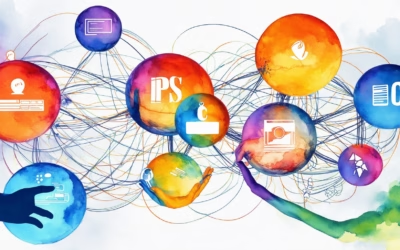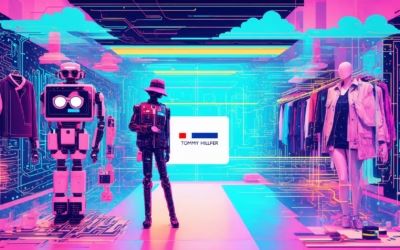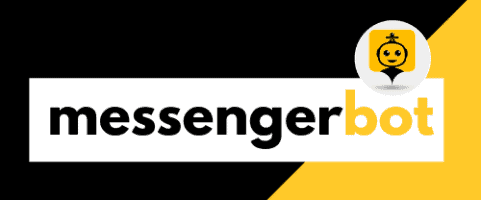In today’s fast-paced business landscape, delivering exceptional customer service is paramount for companies striving to stand out from the competition. As customer expectations continue to soar, businesses are turning to innovative technologies like AI-powered chatbots to revolutionize their support capabilities. These intelligent conversational assistants have the potential to transform customer interactions, providing seamless, personalized experiences while streamlining operations and enhancing overall efficiency. By leveraging the power of artificial intelligence, chatbots can handle a wide range of customer inquiries, from simple queries to complex issues, with unparalleled speed and accuracy. This article delves into the world of AI chatbots for customer service, exploring industry-leading solutions, real-world examples, and best practices for implementing these cutting-edge tools to elevate your brand’s customer support offerings.
What is the best AI chatbot for customer support?
A. Zendesk AI chatbot: An industry-leading chatbot for exceptional customer service
In the realm of AI-powered customer service solutions, the Zendesk AI chatbot stands out as a premier choice for businesses seeking to elevate their support experience. Zendesk’s cutting-edge chatbot technology seamlessly integrates with their comprehensive customer service platform, offering a holistic and intelligent approach to customer interactions.
Leveraging advanced natural language processing (NLP) and machine learning capabilities, the Zendesk AI chatbot can understand complex customer queries, providing accurate and contextual responses. Its conversational AI engine allows for natural, human-like interactions, ensuring a seamless and engaging experience for customers.
One of the key advantages of the Zendesk AI chatbot is its ability to continuously learn and improve from customer interactions. Through self-learning algorithms, the chatbot adapts and refines its responses, ensuring that it stays relevant and up-to-date with evolving customer needs and industry trends.
B. Features and capabilities of Zendesk’s AI-powered chatbot
Zendesk’s AI-powered chatbot boasts a comprehensive suite of features designed to streamline customer support operations and enhance overall customer satisfaction. Some of its standout capabilities include:
- Multi-channel support: The chatbot can be deployed across various channels, including websites, mobile apps, and messaging platforms like Facebook Messenger, ensuring a consistent and seamless customer experience.
- Intelligent routing: With its advanced NLP capabilities, the chatbot can accurately route inquiries to the appropriate support team or agent, reducing response times and improving overall efficiency.
- Seamless agent handoff: When a customer inquiry requires human intervention, the chatbot can seamlessly escalate the conversation to a live agent, providing relevant context and information for a smooth transition.
- Self-service capabilities: By leveraging a comprehensive knowledge base, the chatbot can provide customers with self-service options, empowering them to find solutions independently and reducing the workload on support agents.
- Analytics and reporting: Zendesk’s AI chatbot offers detailed analytics and reporting features, allowing businesses to gain valuable insights into customer interactions, identify areas for improvement, and optimize their support strategies accordingly.
With its robust features and seamless integration with the Zendesk platform, the Zendesk AI chatbot has emerged as a powerful tool for businesses seeking to deliver exceptional customer service experiences while improving operational efficiency and reducing support costs.

Can AI do customer service?
A. The rise of AI in customer service: Transforming the support landscape
The integration of artificial intelligence (AI) into customer service operations is revolutionizing the way businesses interact with their customers. As technology continues to advance, AI-powered solutions are becoming increasingly sophisticated, enabling companies to provide more efficient and personalized support experiences.
AI chatbots and virtual assistants are at the forefront of this transformation, offering round-the-clock availability and instant responses to common inquiries. These intelligent systems can handle routine tasks, such as answering frequently asked questions, providing product information, and guiding customers through simple processes, freeing up human agents to focus on more complex issues.
Beyond automating basic interactions, AI in customer service is also enhancing the overall support experience. Advanced natural language processing (NLP) capabilities allow AI systems to understand the context and sentiment behind customer queries, enabling them to provide more accurate and tailored responses. Additionally, AI can analyze vast amounts of customer data to identify patterns, predict needs, and offer personalized recommendations or solutions, delivering a truly customized experience.
B. AI customer service solutions: Streamlining operations and enhancing experiences
Incorporating AI into customer service operations offers numerous benefits for businesses and customers alike. One of the key advantages is improved efficiency through automation and intelligent routing. Zendesk, a leading customer service software provider, offers an AI-powered chatbot that can handle routine inquiries, reducing wait times and ensuring customers receive prompt assistance.
AI customer service solutions also enable seamless communication with global customers by providing real-time language translation capabilities. This not only enhances the customer experience but also opens up new opportunities for businesses to expand their reach and cater to diverse markets.
Moreover, AI can analyze customer interactions and feedback to identify areas for improvement, allowing companies to continuously refine their processes and product offerings. By leveraging AI-driven insights, businesses can proactively address customer pain points and deliver exceptional experiences that foster loyalty and drive growth.
While AI has the potential to revolutionize customer service, it is important to strike a balance between automation and human interaction. Human agents remain essential for resolving complex issues, providing empathy and emotional intelligence, and building strong customer relationships. By seamlessly integrating AI and human expertise, companies can achieve a harmonious blend of efficiency and personalized service, setting new standards in customer satisfaction.
Here is the content for Section III and its subsections:
Is there any AI that I can chat with?
Absolutely! In today’s rapidly evolving technological landscape, AI-powered chatbots and conversational assistants have become increasingly accessible, allowing you to engage in dynamic dialogues on a wide range of topics. These intelligent systems leverage advanced natural language processing capabilities to comprehend and respond to your queries, offering a unique and enriching conversational experience.
A. Exploring chatbots and AI-powered conversational assistants
The world of AI-powered chatbots and conversational assistants is vast and diverse, catering to various interests and needs. From virtual companions that can engage in open-ended discussions to specialized assistants tailored for specific tasks like writing or coding, the options are plentiful.
Some notable examples include Replika, a customizable AI companion that adapts to your personality and preferences, and Claude, an advanced language model developed by Anthropic capable of substantive conversations on a wide range of subjects. Additionally, ChatGPT from OpenAI and Xiaoice from Microsoft offer engaging conversational experiences powered by their respective AI models.
B. Popular AI chatbots for customer service and beyond
In the realm of customer service, AI chatbots have emerged as powerful tools for enhancing support experiences and streamlining operations. Leading platforms like Zendesk’s AI chatbot and Messenger Bot leverage advanced natural language processing and machine learning capabilities to provide intelligent, context-aware responses to customer inquiries.
These customer service chatbots can handle a wide range of tasks, from answering frequently asked questions to guiding customers through complex processes or even escalating issues to human agents when necessary. By offering 24/7 availability and instantaneous responses, these AI-powered solutions are revolutionizing the customer support landscape, providing seamless and efficient experiences for businesses and consumers alike.
IV. Can I talk to an AI online for free?
Yes, you can absolutely talk to AI chatbots online for free! In fact, many companies and organizations offer free AI chatbot services that allow users to engage in conversational interactions. These chatbots are powered by natural language processing (NLP) and machine learning algorithms, enabling them to understand and respond to user queries in a human-like manner.
A. Free AI chatbot options for customer support and inquiries
Some popular free AI chatbot options include:
- Replika: A highly advanced AI companion that can engage in open-ended conversations on various topics, offering emotional support and companionship.
- Cleverbot: One of the earliest and most widely used AI chatbots, known for its ability to mimic human conversations and learn from interactions.
- Mitsuku: An award-winning AI chatbot designed to provide friendly and engaging conversations, with a focus on emotional intelligence and empathy.
- Pandorabots: A platform that hosts a variety of free AI chatbots created by developers worldwide, covering diverse topics and personalities.
- ChatGPT: A powerful language model developed by Anthropic, capable of engaging in human-like conversations, answering questions, and assisting with various tasks.
To interact with these free AI chatbots, you typically need to visit their respective websites or access them through messaging platforms or virtual assistants. Some chatbots may require registration or have certain usage limitations, but they generally offer a free conversational experience for users to explore and interact with AI technology.
B. Pros and cons of free AI chatbots for customer service
While free AI chatbots can be a great way to experience conversational AI and get basic inquiries resolved, it’s important to understand their limitations when it comes to customer service. Here are some pros and cons to consider:
Pros:
- Cost-effective: Free chatbots allow businesses to experiment with AI technology without significant upfront investment.
- 24/7 availability: Chatbots can provide round-the-clock support, ensuring customers can get assistance anytime.
- Scalability: AI chatbots can handle multiple conversations simultaneously, reducing wait times for customers.
Cons:
- Limited functionality: Free chatbots may have restricted capabilities and may not be able to handle complex queries or tasks.
- Lack of customization: These chatbots are generic and cannot be tailored to specific business needs or branding.
- Privacy concerns: There may be potential data privacy issues when using free chatbots, as user information could be shared or used for other purposes.
For businesses seeking a more robust and tailored customer service chatbot, investing in a paid solution like Messenger Bot can provide greater customization, advanced features, and better data security. However, free AI chatbots can still be a valuable resource for casual conversations and basic inquiries.

A. Comparing AI chatbots: ChatGPT vs. other industry leaders
In the rapidly evolving world of artificial intelligence, ChatGPT has emerged as a groundbreaking conversational AI model, captivating users with its ability to engage in human-like dialogues and tackle a wide range of tasks. However, the quest for innovation never rests, and several other industry leaders have stepped up to challenge ChatGPT’s dominance, each offering unique strengths and specialized capabilities.
One formidable contender is Anthropic’s Constitutional AI, an AI system trained using constitutional principles to promote beneficial and ethical AI systems. Its focus on transparency, honesty, and alignment with human values sets it apart as a trustworthy conversational partner.
Google’s PaLM, a large language model, excels in reasoning, multi-tasking, and code generation, making it a powerhouse for mathematical problem-solving and code analysis. Meanwhile, DeepMind’s Chinchilla shines in efficient language understanding and generation, performing admirably on open-ended tasks while using significantly less computing power.
Anticipation surrounds OpenAI’s GPT-4, the highly anticipated successor to GPT-3, which is expected to surpass ChatGPT’s capabilities in various domains, including multilingual support and multimodal processing. Meanwhile, Anthropic’s Claude emphasizes honesty, transparency, and ethical behavior, aiming to be a trustworthy conversational partner.
Specialized models like AI21 Studio’s Jurassic-1, focused on scientific and technical writing, and Cohere’s Command, a multi-purpose AI model trained on diverse data, further diversify the AI landscape.
While ChatGPT remains a remarkable achievement, these emerging AI models and platforms demonstrate the industry’s relentless pursuit of innovation. The “best” AI may vary depending on the specific task, use case, and evaluation criteria. As AI capabilities continue to evolve, it becomes increasingly crucial to assess factors like model transparency, ethical considerations, and potential biases when comparing and selecting AI systems.
B. Factors to consider when choosing an AI chatbot for customer service
As businesses embrace the power of artificial intelligence to enhance their customer service offerings, selecting the right AI chatbot becomes a critical decision. Here are some key factors to consider when choosing an AI chatbot for customer service:
- Natural Language Processing (NLP) capabilities: A chatbot’s ability to understand and interpret human language accurately is paramount. Evaluate the NLP capabilities of the AI model, including its ability to handle context, sentiment analysis, and conversational flow.
- Integration and customization: Assess the chatbot’s compatibility with your existing systems and platforms, as well as its ability to be customized to align with your brand’s voice, tone, and specific requirements.
- Multilingual support: If your business operates globally or caters to a diverse customer base, consider an AI chatbot that offers multilingual support to ensure seamless communication with customers across different languages.
- Scalability and performance: As your business grows, your chatbot should be able to handle increasing volumes of customer interactions without compromising on response times or accuracy. Evaluate the chatbot’s scalability and performance capabilities.
- Continuous learning and improvement: The best AI chatbots leverage machine learning algorithms to continuously improve their knowledge base and conversational abilities based on customer interactions. Look for chatbots that offer this self-learning capability.
- Data security and privacy: Ensure that the chatbot provider adheres to strict data security and privacy standards, especially when handling sensitive customer information.
- Reporting and analytics: Choose an AI chatbot that provides comprehensive reporting and analytics features, allowing you to track performance metrics, identify areas for improvement, and gain valuable insights into customer interactions.
By carefully evaluating these factors and aligning the AI chatbot’s capabilities with your specific business needs, you can select a solution that not only enhances your customer service efforts but also drives customer satisfaction and loyalty.
Can I use Bard for free?
Yes, you can use Google’s Bard AI chatbot completely free of charge. As one of the latest entrants in the AI chatbot space, Bard is being offered as a free service by Google to anyone with a Google account. This aligns with Google’s vision of making advanced AI technology accessible to a broad audience, democratizing its potential for various applications.
A. Google’s Bard: A new AI chatbot for customer service and beyond
Bard is Google’s conversational AI chatbot designed to assist users with a wide range of tasks, from research and analysis to creative writing and coding. Powered by Google’s cutting-edge language models, Bard aims to provide helpful, nuanced, and contextual responses, making it a valuable tool for customer service and support.
One of Bard’s key strengths is its ability to understand and communicate in natural language, allowing for more intuitive and human-like interactions. This can greatly enhance the customer support experience, as users can articulate their queries or issues in their own words without having to navigate complex menus or prompts.
Additionally, Bard’s extensive knowledge base, drawn from Google’s vast data repositories, enables it to provide accurate and up-to-date information across various domains, from technical troubleshooting to product information and beyond. This breadth of knowledge can be invaluable in addressing a wide range of customer inquiries efficiently and comprehensively.
B. Free vs. paid AI chatbot options: Evaluating the best fit
While Google’s Bard is currently available for free, it’s important to consider the pros and cons of free AI chatbots versus paid options when evaluating the best fit for your customer service needs.
Free AI chatbots like Bard can be an excellent starting point, especially for smaller businesses or those looking to experiment with AI-powered customer service. They offer a low-risk way to explore the potential of conversational AI without significant upfront investment. However, free services may have limitations in terms of customization, integration, or advanced features that could be critical for larger enterprises or more complex use cases.
On the other hand, paid AI chatbot solutions from providers like Zendesk or IBM Watson Assistant often offer more robust and tailored capabilities. These can include advanced natural language processing, seamless integration with existing systems, and customization options to align the chatbot’s personality and responses with your brand identity.
Ultimately, the decision between free and paid AI chatbot options will depend on your specific requirements, budget, and long-term goals for customer service automation. It’s advisable to carefully evaluate your needs, weigh the pros and cons, and potentially explore a combination of free and paid solutions to find the optimal fit for your business.
VII. AI customer service example
A. Real-world examples of companies using AI for customer support
As businesses strive to provide exceptional customer experiences, many leading companies have embraced AI-powered chatbots for customer support. One prominent example is Zendesk, an industry leader in customer service software. Their AI chatbot leverages advanced natural language processing to understand customer inquiries and provide accurate, personalized responses.
Another company at the forefront of AI customer service is Amazon. Their virtual assistant is capable of handling a wide range of customer queries, from tracking orders to providing product recommendations. By integrating AI, Amazon has streamlined its support processes, enhancing efficiency and customer satisfaction.
In the financial sector, Bank of America has implemented Erica, an AI-driven chatbot that assists customers with account management, bill payments, and financial inquiries. Erica’s conversational interface and intelligent capabilities have revolutionized the bank’s customer service, providing 24/7 support and personalized advice.
B. Best practices and tips for implementing AI chatbots in customer service
To successfully integrate AI chatbots into your customer service strategy, it’s essential to follow industry best practices. First and foremost, ensure that your chatbot is trained on a comprehensive knowledge base, covering common queries and scenarios relevant to your business. Continuously updating and refining the chatbot‘s knowledge is crucial for providing accurate and helpful responses.
Another best practice is to design a seamless handoff process, allowing customers to transition smoothly from the chatbot to a human agent when necessary. This ensures that complex or sensitive issues are handled by experienced professionals, while the chatbot efficiently resolves straightforward inquiries.
Additionally, prioritize data security and privacy when implementing AI chatbots. Customers must feel confident that their personal information and conversations are protected. Regularly audit your chatbot system for vulnerabilities and adhere to industry standards for data handling and encryption.
Finally, continuously monitor and analyze chatbot performance metrics, such as customer satisfaction scores, resolution rates, and conversation flows. Use these insights to identify areas for improvement and optimize your chatbot‘s capabilities, ensuring that it consistently delivers exceptional customer service.





